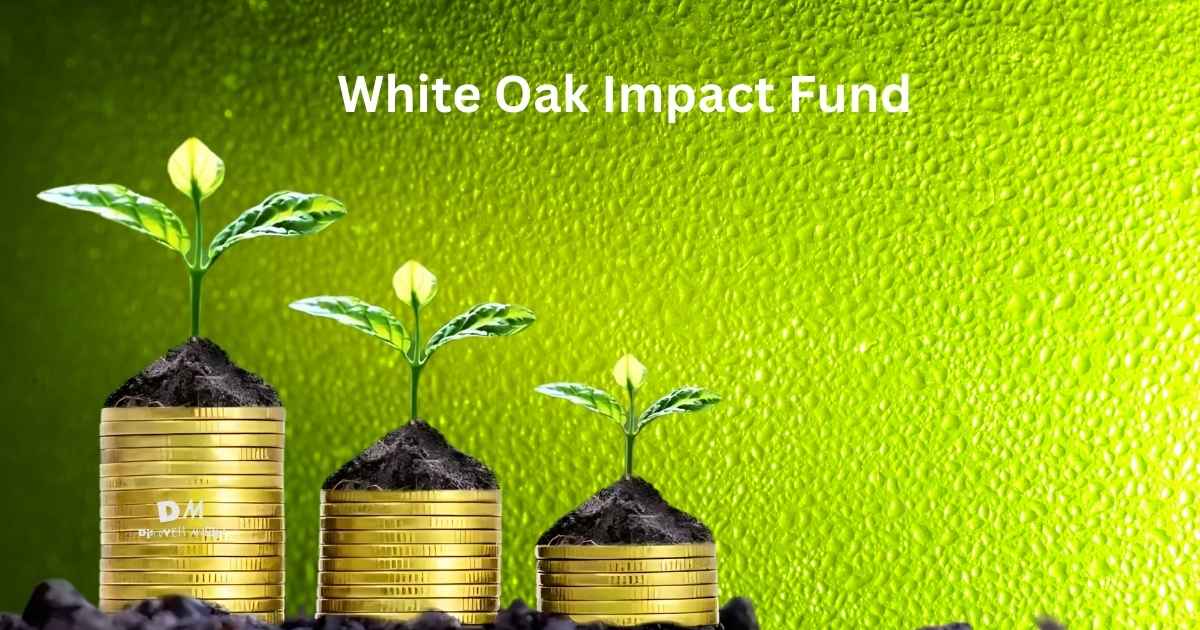Table of Contents
Introduction: The Evolution of Investing
In today’s financial landscape, investors face a complex array of choices driven by the growing awareness of global challenges and the need for sustainable solutions. Impact investing has emerged as a revolutionary approach, allowing individuals and institutions to align their capital with their values. This paradigm shift highlights the increasing recognition that financial success can coexist with social responsibility. The White Oak Impact Fund exemplifies this trend by aiming to achieve competitive financial returns while contributing to societal improvement.
The Need for Change
The world is confronting significant challenges, including climate change, healthcare inequities, and educational disparities. Traditional investment models, primarily focused on maximizing profit, often overlook the social ramifications of capital allocation. This negligence has led to a rising call for investment strategies that consider both profit and purpose, leading to the emergence of impact investing.
What is Impact Investing?
Impact investing refers to investments made with the intention of generating positive social and environmental outcomes alongside financial returns. This approach transcends traditional philanthropy, allowing investors to engage with pressing issues while maintaining the potential for profit. Impact investors are motivated by various factors, including ethical considerations, community engagement, and long-term sustainability.
Understanding the Landscape of Investment Options Available Today
The investment landscape has transformed dramatically over the past few decades, offering a wide variety of options ranging from traditional stocks and bonds to more innovative strategies like impact investing. Investors today are increasingly sophisticated, seeking opportunities that resonate with their values while also offering financial benefits.
Traditional Investment Funds: A Brief Overview
Traditional investment funds, such as mutual funds, hedge funds, and private equity, have dominated the market for years. These funds typically focus on maximizing returns through diversified portfolios that may include stocks, bonds, and other financial instruments. Each type of traditional fund has its unique characteristics:
- Mutual Funds: Pooled investments managed by professionals, offering diversification and professional management. Investors can buy shares of the fund, gaining exposure to a range of assets without the need for extensive knowledge of the market.
- Hedge Funds: More aggressive and less regulated, hedge funds often employ complex strategies, including short selling and leverage, to achieve high returns. They are usually available only to accredited investors due to their high risk.
- Private Equity: These funds invest directly in private companies or buy out public companies, often restructuring them to improve performance before selling them at a profit. The focus is typically on long-term value creation.
The Rise of Impact Investing
As the world grapples with complex challenges, impact investing has gained momentum. Investors increasingly recognize that their capital can drive positive change. The rise of this investment strategy is evident in the following trends:
- Increased Awareness: Investors are becoming more aware of the social and environmental implications of their investments. This awareness has sparked a demand for funds that align with their values.
- Performance Metrics: The development of metrics to measure social impact has made it easier for investors to assess the effectiveness of their impact investments. This evolution has helped validate the notion that financial returns can coexist with positive social outcomes.
- Institutional Participation: Large institutional investors are beginning to allocate portions of their portfolios to impact investments, signaling a shift in mainstream finance. This trend is driven by a combination of ethical considerations and recognition of the long-term value of sustainable investing.
Defining the White Oak Impact Fund
The White Oak Impact Fund is an innovative investment vehicle that embodies the principles of impact investing. Established by White Oak Global Advisors, this fund aims to create sustainable financial returns while addressing pressing social issues.
What is the White Oak Impact Fund?
The White Oak Impact Fund is a diversified investment fund focusing on sectors that generate measurable social impact alongside financial performance. Its mission is clear: to harness the power of capital for good, aligning investments with societal needs while delivering competitive returns to investors.
Key Objectives and Mission of the Fund
The core objectives of the White Oak Impact Fund revolve around three main pillars:
- Promoting Social Impact: The fund targets investments that address critical social issues, including access to healthcare, renewable energy, and education.
- Ensuring Financial Sustainability: While focusing on social outcomes, the fund aims for robust financial returns, recognizing that long-term sustainability requires financial viability.
- Engaging Communities: The fund prioritizes collaboration with local stakeholders, ensuring that investments align with community needs and foster sustainable development.
Areas of Investment Focus
The White Oak Impact Fund primarily invests in three key areas:
- Renewable Energy: With climate change posing an existential threat, the fund seeks to finance projects that enhance access to clean and sustainable energy sources. This includes investments in solar, wind, and other renewable technologies that contribute to a low-carbon economy.
- Healthcare Initiatives: Access to quality healthcare remains a significant challenge, particularly in underserved communities. The fund invests in innovative healthcare solutions that improve accessibility and outcomes for marginalized populations.
- Educational Programs: Education is a powerful tool for social change. The White Oak Impact Fund supports initiatives that enhance educational access and quality, especially for disadvantaged groups, aiming to bridge the educational gap.
ALSO READ ABOUT ASHLEY FURNITURE
Defining Traditional Investment Funds
What are Traditional Investment Funds?
Traditional investment funds represent a long-established segment of the financial market, focused on generating returns for investors through diversified portfolios. They play a crucial role in providing capital to businesses and promoting economic growth.
Types of Traditional Funds
- Mutual Funds: These funds pool money from multiple investors to purchase a diversified portfolio of stocks, bonds, or other securities. They are managed by professional fund managers who aim to achieve specific investment objectives.
- Hedge Funds: Hedge funds are less regulated and often employ aggressive strategies, such as short selling and leverage, to achieve high returns. They cater to accredited investors and can take on significant risk to maximize profits.
- Private Equity: Private equity funds invest directly in private companies or buy out public companies, often restructuring them to improve performance before selling them at a profit. This approach typically requires a longer investment horizon.
Investment Strategies Commonly Used in Traditional Funds
Traditional investment funds employ various strategies to optimize returns, including:
- Diversification: By spreading investments across different asset classes, sectors, and geographic regions, traditional funds seek to reduce risk and enhance stability.
- Market Timing: Fund managers attempt to predict market movements to buy and sell securities at opportune times, aiming to capitalize on price fluctuations.
- Active Management: Traditional funds often rely on active management, where portfolio managers continuously analyze market conditions and make adjustments to the portfolio based on their insights.
Comparative Analysis of Investment Goals
Financial Returns vs. Social Impact: The Fundamental Difference
The fundamental difference between the White Oak Impact Fund and traditional investment funds lies in their objectives. Traditional funds primarily focus on maximizing financial returns, while the White Oak Impact Fund integrates social impact into its investment strategy.
The Double Bottom Line: Profitability and Purpose
The concept of the double bottom line reflects the White Oak Impact Fund’s commitment to achieving both financial and social objectives. This dual focus allows investors to align their capital with their values while still seeking competitive returns.
Long-Term vs. Short-Term Investment Perspectives
The White Oak Impact Fund emphasizes long-term social impact, recognizing that meaningful change often requires sustained investment. Traditional funds, on the other hand, may prioritize short-term financial performance, potentially leading to volatility and misaligned priorities.
Investment Strategies: A Closer Look
Investment Approach of the White Oak Impact Fund
The investment approach of the White Oak Impact Fund is characterized by a rigorous analysis of potential investments, focusing on measurable social outcomes alongside financial returns. This process involves:
- Due Diligence: A thorough examination of prospective investments to assess their potential for both financial success and social impact.
- Stakeholder Engagement: Collaborating with community stakeholders to understand their needs and ensure investments align with local priorities.
- Impact Measurement: Establishing metrics to measure the effectiveness of investments in achieving social goals, providing transparency to investors.
How Traditional Investment Funds Operate and Their Strategies
Traditional investment funds operate with a focus on maximizing returns through diversified portfolios. Their strategies often involve:
- Research and Analysis: Conducting extensive research to identify promising investment opportunities and assess market trends.
- Portfolio Management: Actively managing portfolios to respond to market conditions, adjusting holdings as needed to optimize performance.
- Risk Management: Implementing strategies to mitigate risks, including diversification and hedging techniques.
Risk Assessment in Impact Investing vs. Traditional Investing
Investors must navigate various risks when considering impact versus traditional investments:
- Impact Investing: While impact investments may experience short-term volatility, they often prioritize long-term sustainability and social benefits, accepting potential risks in exchange for positive outcomes.
- Traditional Investing: These investments face market risks tied to economic fluctuations, liquidity challenges, and performance pressures, often resulting in a more aggressive approach to risk management.
Portfolio Composition and Diversification
Diversity of Assets in the White Oak Impact Fund
The White Oak Impact Fund maintains a diversified portfolio, investing in various asset classes that align with its social impact objectives. This diversity helps mitigate risks while enhancing the potential for financial returns. The fund’s investments may include:
- Equities: Investments in publicly traded companies that meet the fund’s criteria for social impact.
- Debt Instruments: Financing initiatives through bonds or loans that support projects in renewable energy, healthcare, and education.
- Private Equity: Direct investments in private companies that align with the fund’s mission and demonstrate potential for both financial and social returns.
The Importance of Diversification in Traditional Investment Funds
Traditional investment funds also prioritize diversification as a key strategy to manage risk. By spreading investments across various assetHere’s the continuation of the blog post, focusing on the composition and diversification aspects of traditional investment funds and the White Oak Impact Fund:
The Importance of Diversification in Traditional Investment Funds
Traditional investment funds also prioritize diversification as a key strategy to manage risk. By spreading investments across various asset classes, sectors, and geographic regions, these funds aim to reduce volatility and enhance long-term returns. A well-diversified portfolio can protect against market fluctuations, allowing investors to achieve a more stable performance over time.
Risk-Return Trade-Off: Impact Investing vs. Traditional Investing
When comparing the risk-return profiles of impact investing versus traditional investing, several factors come into play:
- Impact Investing: While the focus on social outcomes may introduce some level of risk—especially if projects do not yield expected returns—many investors are willing to accept this trade-off. The potential for creating lasting societal change often outweighs short-term financial concerns.
- Traditional Investing: These investments typically aim for higher financial returns with a focus on short-term gains. However, this approach can sometimes lead to a neglect of social responsibility, resulting in investments that may contribute to societal challenges.
Conclusion
The White Oak Impact Fund represents a significant shift in the investment landscape, demonstrating that capital can drive positive change while still delivering financial returns. As investors increasingly prioritize sustainability and social responsibility, impact investing is likely to gain further traction.
The rise of the White Oak Impact Fund and similar initiatives highlights a growing recognition that financial performance and social impact are not mutually exclusive. By embracing this dual focus, investors can contribute to a more equitable and sustainable future while also achieving their financial goals.




